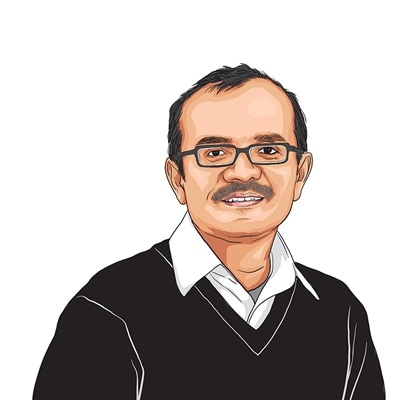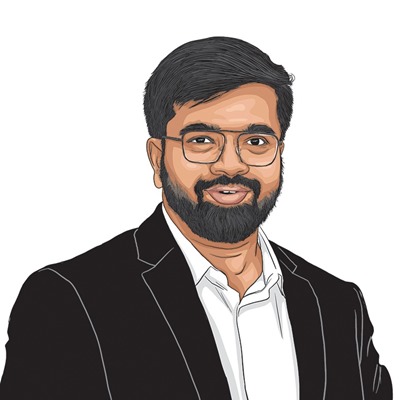Opinion G20’s Startup20 Engagement Group: A SUMup of ideas
A bundling together of complementary start-ups could help tackle the global challenge of sustainable development
 Globally, natural disasters are on the rise.
Globally, natural disasters are on the rise. Think of a situation beyond our control — no matter how rich or poor one may be — that we are increasingly likely to face but would not like to. Natural disasters are among such situations. There would hardly be anyone reading this article, who either hasn’t been in or doesn’t know someone who has survived a natural disaster. Unfortunately, it is clear from the rigorous work of many scientists today that, going forward, even if we drastically improve our dealings with nature, at least a few generations to come are likely to experience natural disasters with a frequency, intensity, and complexity far greater than the generations before them. Let us look at the past decades.
Globally, natural disasters are on the rise. Even if we limit our analysis to only those events with 10 or more deaths; 100 or more people affected, injured, homeless; declaration of a state of countrywide emergency; and appeal for international assistance, there is a disturbing pattern. The FAO’s report, ‘The impact of disasters and crises on agriculture and food security: 2021 shows that there were 360 such events per year in the 2010s, compared to just over 100 in the 1980s and 90 in the 1970s. The frequency of climate, weather and hydrology-related disasters has increased, not the geophysical or biological emergencies — except Covid-19, of course. The impact, too, has been unsparingly global — be it the forest fires of Australia and California, heat and dust storms of northern India, or floods of South Sudan and Pakistan. We know from science that such challenges aren’t going away anytime soon and the best we can do is get better at dealing with them. Fortunately, help is on the way.
At some point in your education, you may have encountered this elegant exercise that hopes to demonstrate the power of an idea. It goes like this: If you have one apple and I have one, I give you mine, and you give me yours; how many apples does each of us have? One, of course. Now, if I have an idea and you have one, and we do the same, how many ideas does each of us have? There are not too many things in this world that grow by sharing. Ideas are among them (the other is, of course, love). Now think about this on a global scale.
What if we had SUMups of start-ups globally that work on some aspect of managing natural disasters? Would we all be better off? There is no definition of a SUMup, so let us clarify what we mean by it: Loosely, a SUMup is a hypothetical bundling of complementary start-ups.
Imagine start-ups combining intelligent computer algorithms to develop disaster management technologies that assess the risk associated with various disasters and simulate these events to prepare, prevent, and recover everyone involved. A Japan-based start-up, CERD-AR, developed an Augmented Reality (AR) application that gamifies the animations of disasters and provides disaster prevention drills to prepare people for evacuation and reaction in ultra-realistic settings. The application can simulate diverse kinds of disasters — a tsunami caused by an earthquake, flooding rivers, fire in densely populated complexes of wooden houses, and collapse of block walls.
While these applications simulate real-time, interactive environments, a Palo Alto-based start-up, One Concern, built a digital twin of the world by analysing satellite images to predict natural disasters. The platform combines Artificial Intelligence, Machine Learning (AI/ML) and supercomputers to develop seismic and flood technology for real-time prediction of flooding and assess the risk associated with various events. These start-ups operating in the realm of simulating disasters for preparation and prevention have come close to becoming unicorns as a result of corporations taking great interest in sourcing relevant technologies for implementing innovative solutions in disaster-prone countries.
Emergency response and reconstruction activities must complement disaster prevention technologies to reduce socio-economic effects in any society. Recently, an Indian start-up Garuda Aerospace deployed drones in Turkey for surveillance in the affected earthquake areas to identify trapped victims. Such technologies from developing nations like India have evolved to provide affordable innovations for disaster assessment and response mechanisms.
The exponential rise of the Internet of Things (IoT) start-ups is paving the way for integrating sensors, smart vehicle-to-everything (V2X) technologies, and IoT networks, among others, for quickly planning the safest and most efficient routes to shelters for helping citizens affected. IoT innovations emerging from start-ups like HW Design Labs support disaster response teams in planning their operations effectively through deep penetrating ground sensing radars, wireless connectivity solutions, advanced tracking, and navigation services.
Another start-up, MyResQR, provides emergency communication between victims and stakeholders. The smart QR code manages information and triggers SOS during emergencies by enabling first responders like ambulance services, hospital staff, and other emergency response teams.
Today, many countries want to train with the Indian disaster relief agency. In a recent interview, the Director General of the National Disaster Response Force talked of the growing interest in 30 countries, and the Interpol, to understand India’s disaster response model, and collaborate with New Delhi. Such coming together of nations represents an opportunity that we can respond to effectively through SUMups of global start-ups.
The opportunity in front of the Startup20 Engagement Group of G20 is to enable many such SUMups. While there can be micro and mezzo-level aggregations, the unique opportunity here is to build those that address the Sustainable Development Goals for the whole world. For instance, the SUMup on disaster management is about SDG 9, “Building Resilient Infrastructure”, and SDG 2, “Zero Hunger”. Returning to FAO, 26 per cent of all damage from natural disasters during 2008-18 was to agriculture.
Of course, not all ideas add up. Sometimes, my idea can hurt your idea and vice-versa. Our responsibility is to build the Startup20 Engagement Group in such a way that this does not happen.
This is not to say that there cannot be healthy competition between ideas. That, of course, is natural. But SUMups should not have the solution of one start-up being negated by that of another, nor should they include start-ups that solve problems in one part of the system, while creating new ones in another.
In the history of G20, for the first time, we have the opportunity to define collaborative mechanisms that could give rise to such SUMups. As the Startup20 Engagement Group takes off, this is one way we can accelerate meeting the Sustainable Development Goals.
The writers work at the Atal Innovation Mission, NITI Aayog. Views expressed in this article are personal






